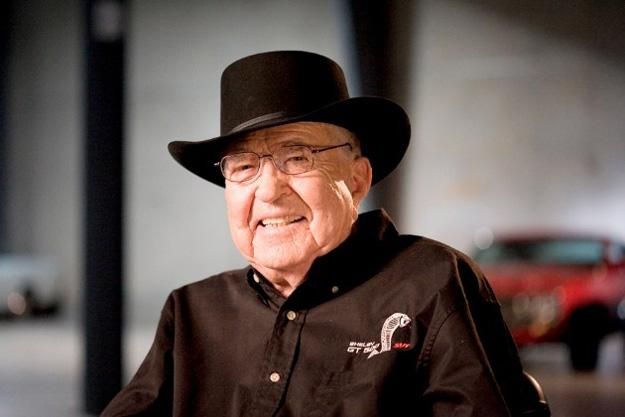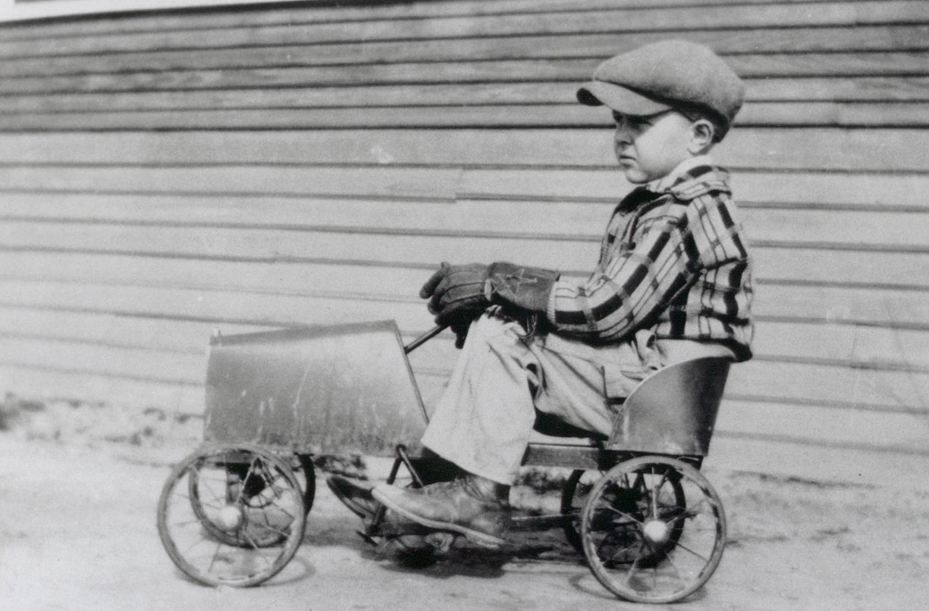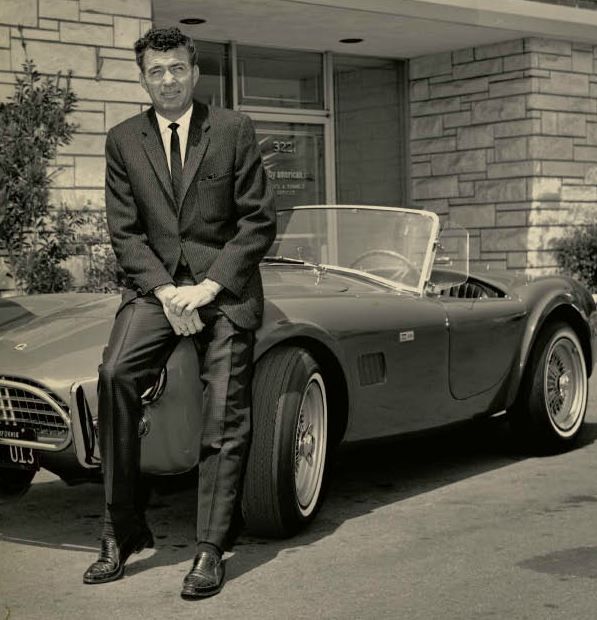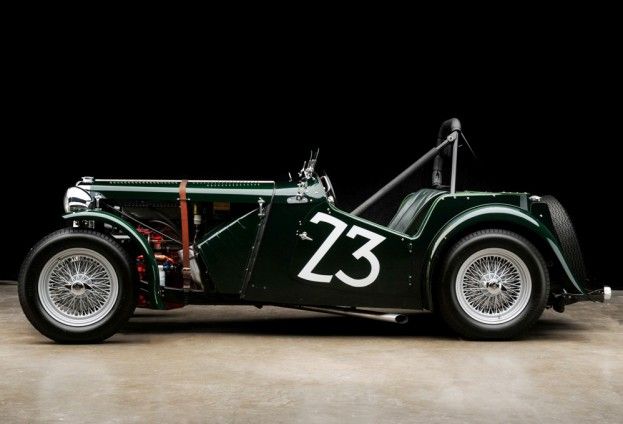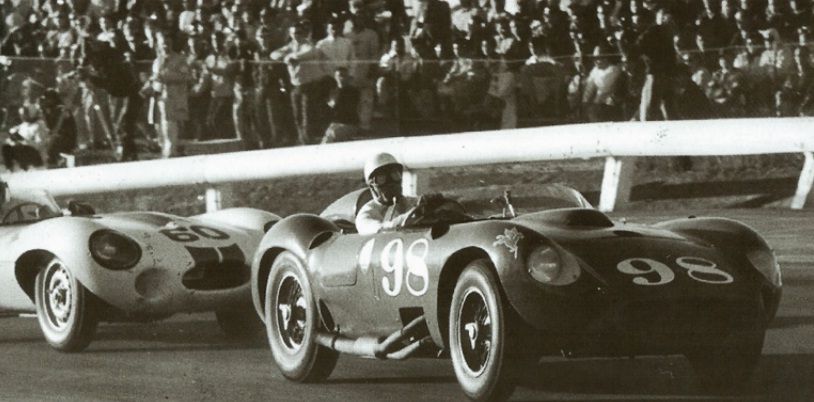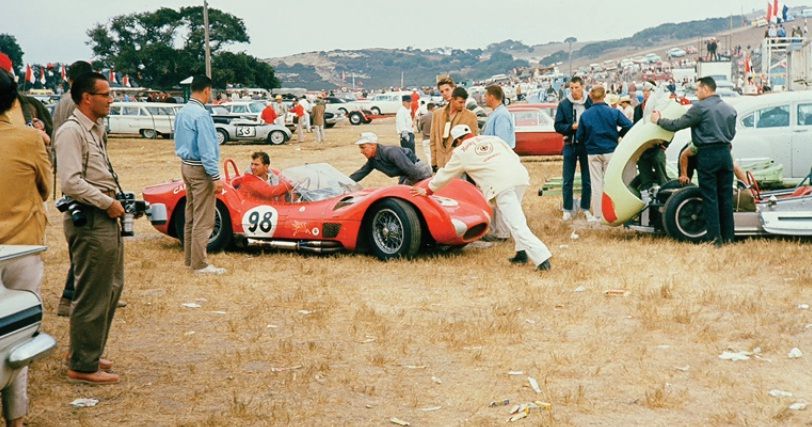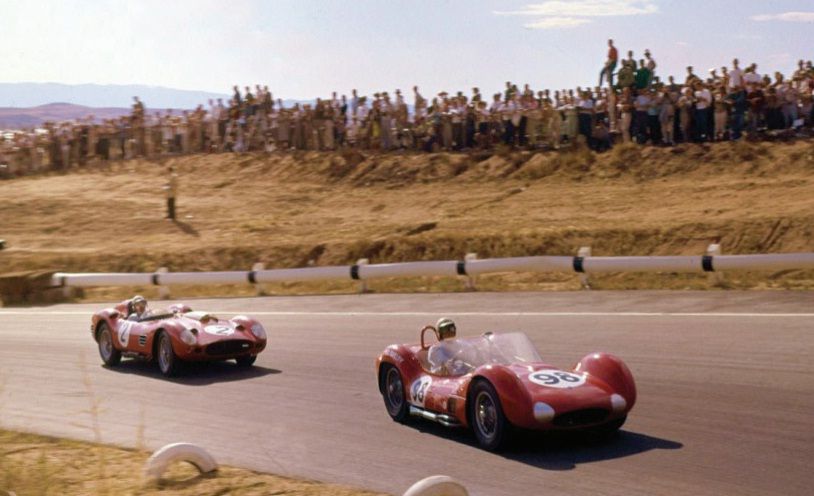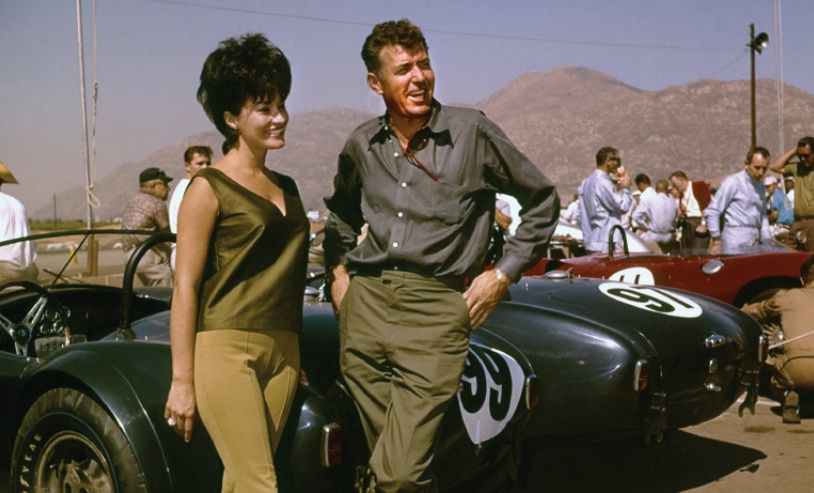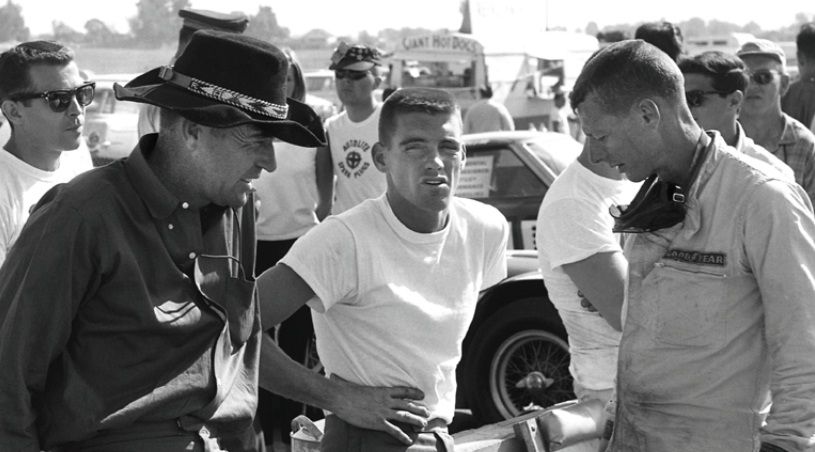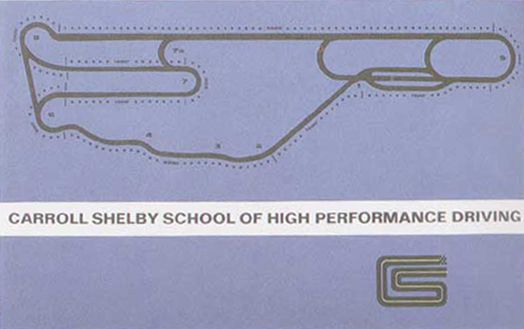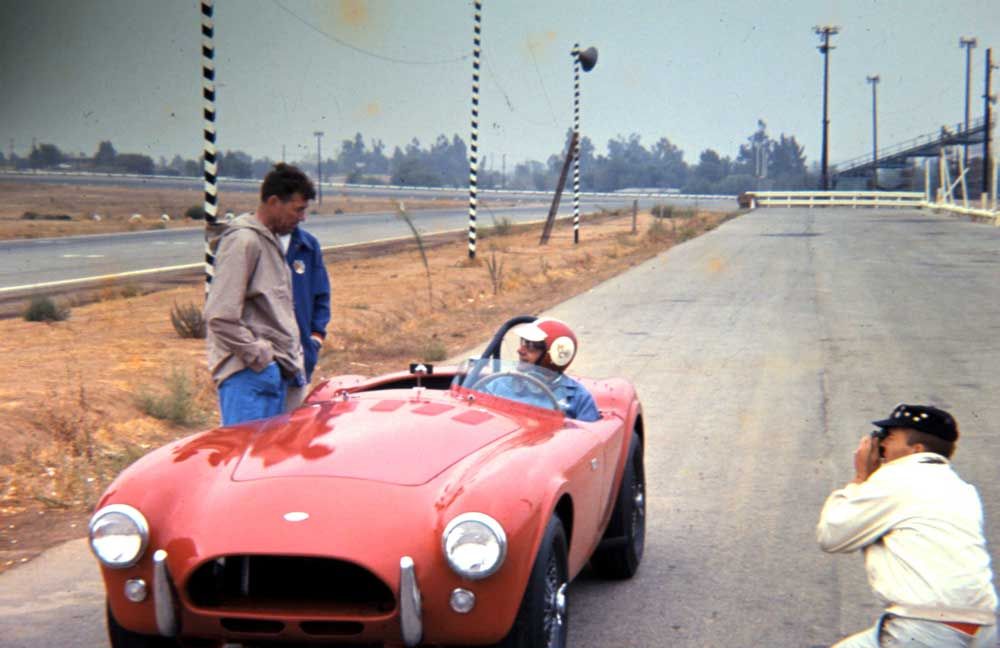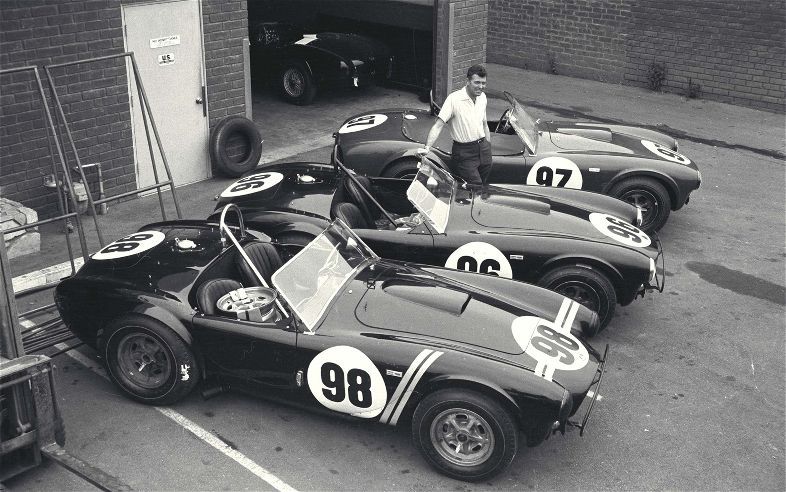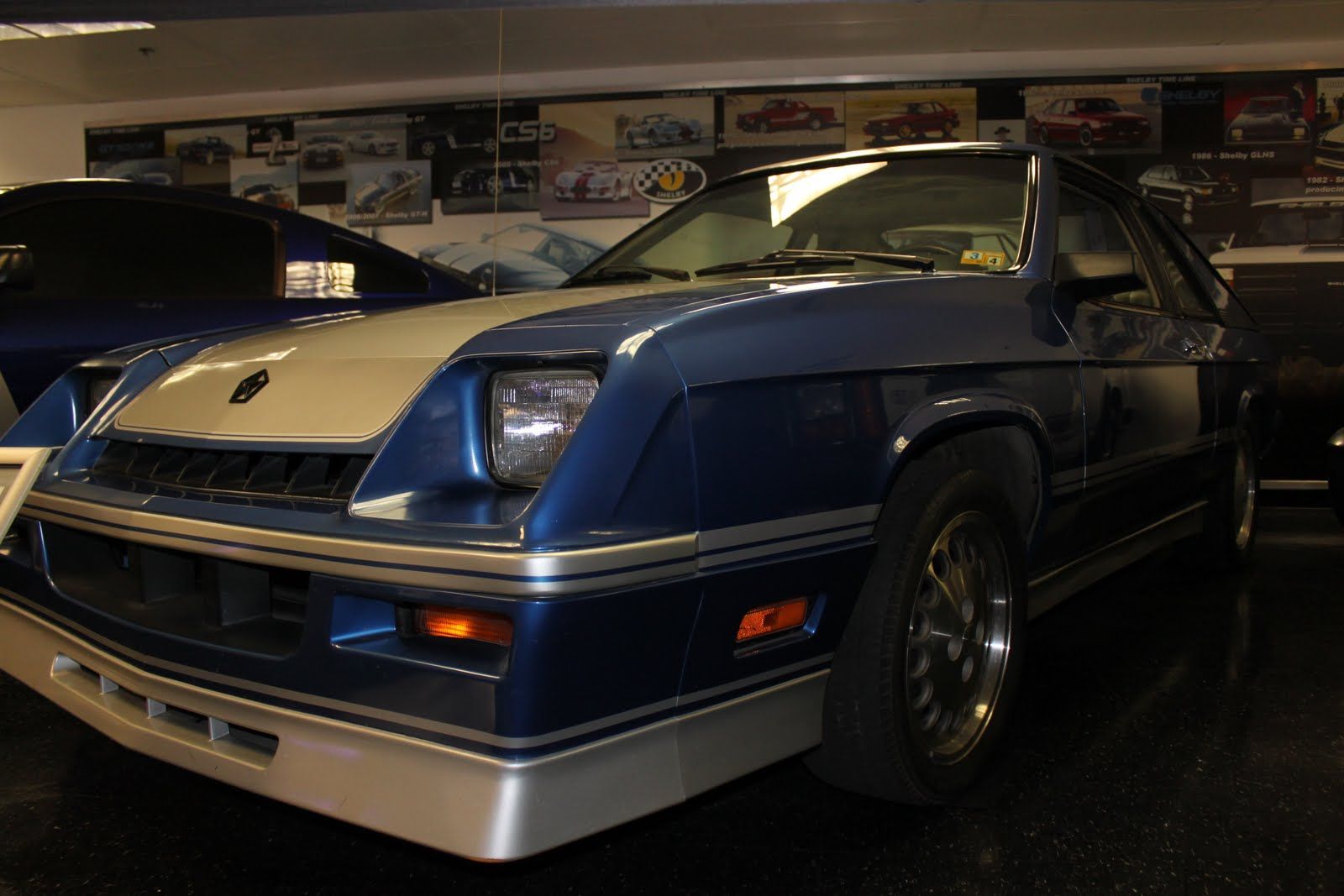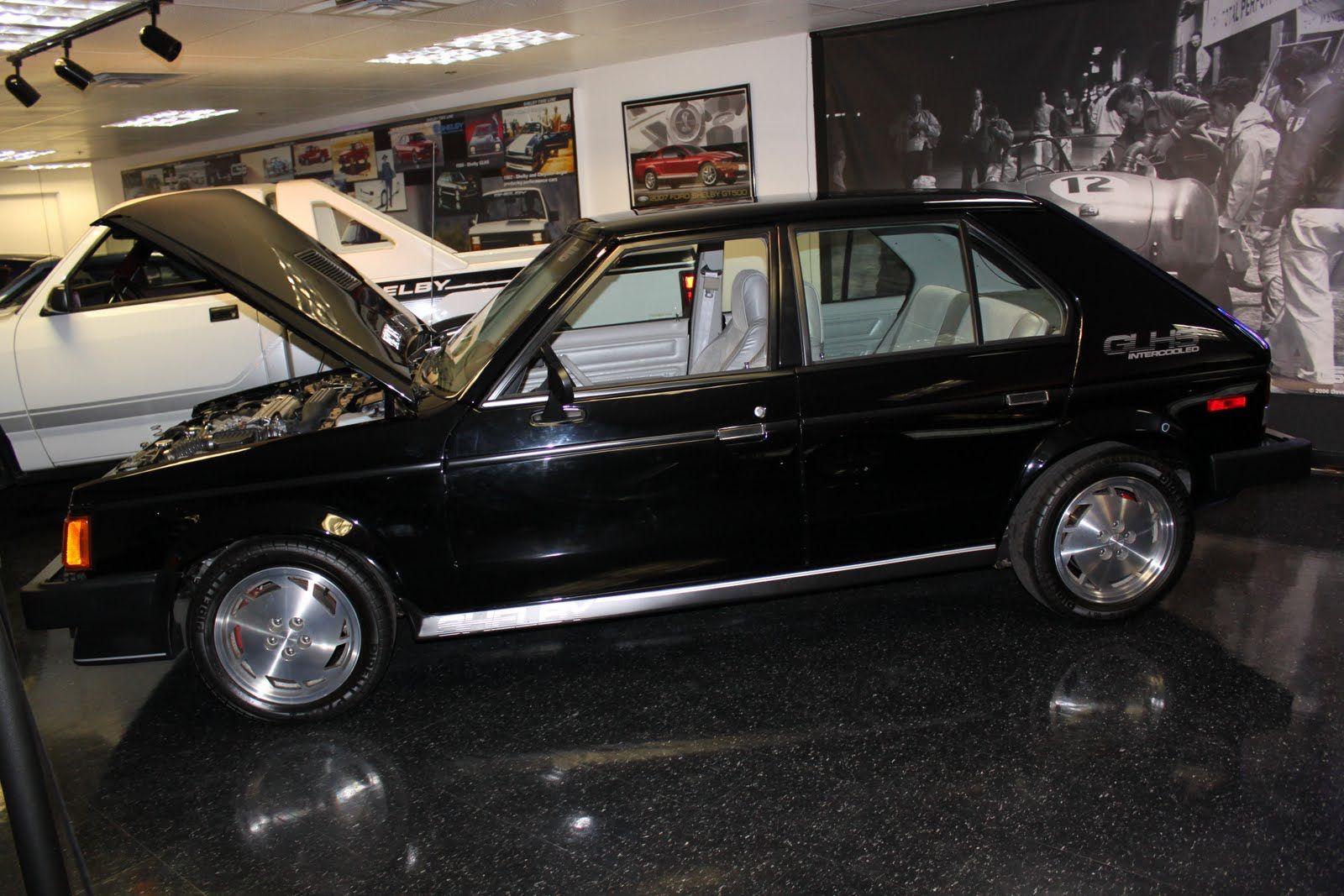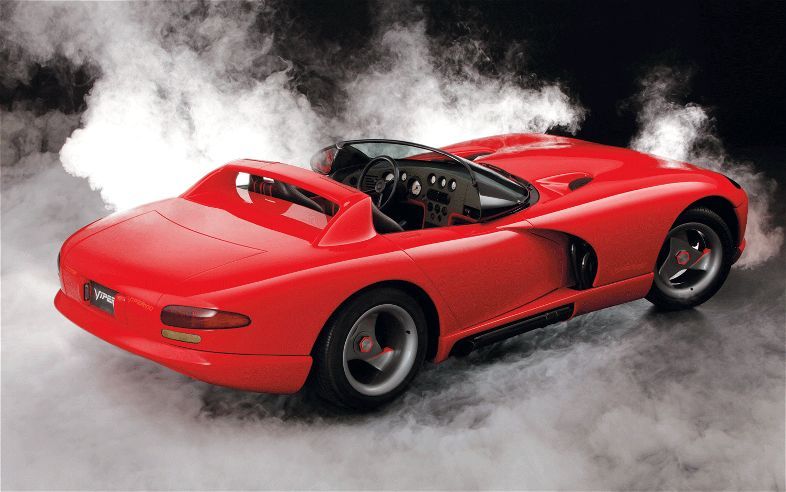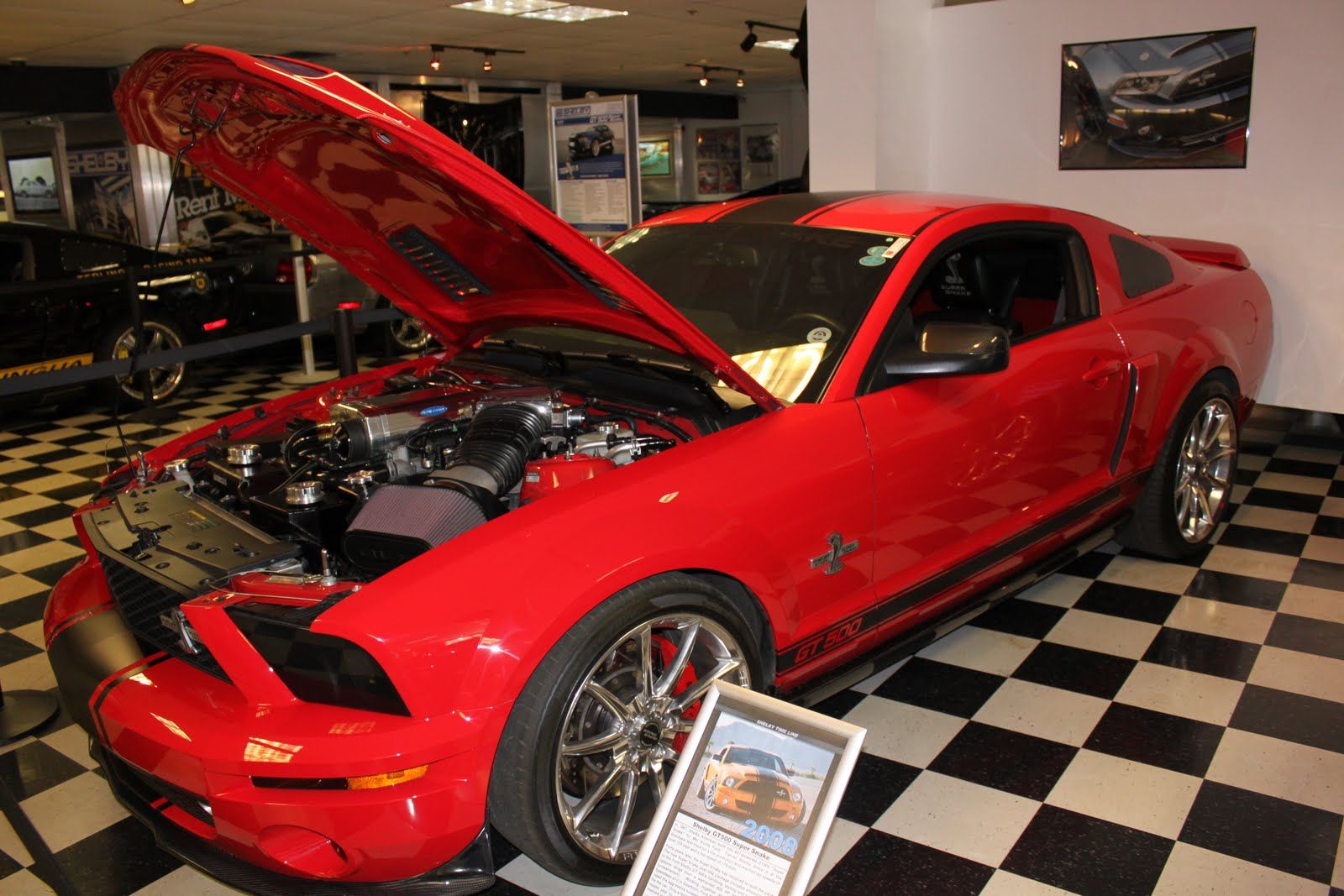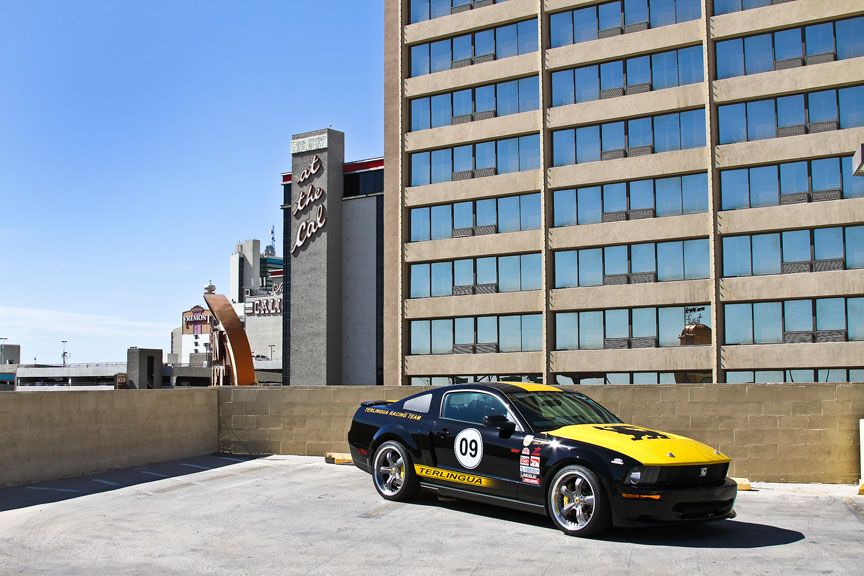The name Carroll Shelby->ke81 may not be quite as familiar to new automotive enthusiasts as it is for older generations, but his creations are no stranger to anyone that follows and loves performance automobiles. Mr. Shelby was not only a genius when it came to building high-performance American muscle, but he was also an accomplished racecar driver.
Carroll managed to parlay his racing roots into a partnership with Ford that spanned over 50 years. However, that partnership almost never happened, as his first choice in partners was Chevrolet. Imagine that, a “Shelby Camaro->ke248” or “Shelby Corvette,” it just doesn’t quite sound as good as "Shelby Mustang->ke1359,” does it?
Carroll Shelby lived a full life, as he graced this world with 89 years of his presence and nearly 60 of those years he was providing us gearheads with examples of his automotive skill, be it winning races or designing hot rods. Carroll Shelby will be missed dearly by everyone in the automotive world, but we are not here to mourn the passing of this legend. Nope, we feel that the right way to send off this legend is by celebrating his long and legendary life.
Click past the jump to read the complete life history of Mr. Carroll Shelby
Early Years: His Love Begins
Carroll Shelby was born on January 11, 1923 to Warren Shelby and Eloise Shelby. He was not born into a bloodline of racing, as his father was a hard working rural mail carrier and his mother was a homemaker. At 7 years old, Shelby developed a heart condition that resulted in much of his childhood being lived in a bed.
After seven years of battling this leaking valve in his heart, Shelby began showing improvements and doctors eventually granted him a clean bill of health.
Shelby’s adolescence was not void of all things automotive, as his father, was a gearnut at heart and frequently took Carroll and his friends to dirt bike races and car races. Once Carroll was old enough to drive, he began traveling outside of his local area to see more advanced racing, like the IMCA sprint car events in Iowa.
In high school, Shelby learned about how internal combustion engines operated by tearing apart and rebuilding small go-carts. His second love, aviation, became realized after his father bribed young Shelby to get on an airplane.
Army Years: Stealing Planes and Wooing Women
Shelby was just 16 years old when World War II broke out, but once he was eligible to enlist into the armed forces, he signed up for the Army Air Corps. At one point Carroll decided that a simple phone call to a girl he liked, Jeanne Fields, wasn’t enough, as he took an unguarded plane out for a spin over the young lady’s house and dropped a letter in her yard. Somehow he managed to get away with this shenanigan.
Until 1945, Shelby remained in the Army Air Corps, never seeing any action in WWII. In the middle of his time with the army, Carroll found time to court Jeanne Fields, whom he then married in 1943, without having to fly a plane over her house ever again. Between 1941 and 1945, Mr. Shelby was a flight instructor at military bases in Texas and Colorado, teaching young men how to fly various bomber planes for the war.
Carroll’s time in the military ended in 1945 and he returned to a normal civilian life.
Early Adulthood: A Dream Fulfilled
Immediately following his exit from the Army, Shelby jumped into a dump truck business that apparently did not work out too well. In 1949, he decided chicken was his way to make money. No, not the deadly head on game that teenage heartthrobs play in bad `50s movies, but literally raising chickens.
This chicken farming business began as a relative success, as his first batch of chickens netted him $5,000 in profit, the equivalent of about $46,000 today. His second group of chickens didn’t turn out nearly as well, as the entire flock died of limberneck disease and sent his chicken farming industry into bankruptcy. The bankruptcy, though tragic at the time, was truly a blessing in disguise. Had it not been for that, we may be eating Carroll Shelby chicken, as opposed to driving Shelby Mustangs.
In 1952, Carroll Shelby finally realized his dream and drove in a racecar for the first time in his life. Unlike the road races that he became famous for, this initial race was at a quarter-mile drag meet. The initial racecar was a custom hot rod that was fitted with, ironically enough, a flat-head Ford V-8 engine.
Adulthood: The Racing Legend is Born, Striped Coveralls and all
Knowing that road racing was his calling and not oval or drag racing, Shelby’s friend, Ed Wilkins, entered Carroll into an MG race in Wilkins’ personal daily driver, an MG TC. Shelby took Wilkins’ street-ready daily driver and beat all of the other MGs with ease. On the same day, Shelby went on to beat a class of much faster Jaguar XK 120s.
For those that do not understand the hilarity behind that, the MG TC punched out about 54 horsepower at its peak, in 1950, and the XK120 pushed out anywhere from 160 horsepower to 210 horsepower, depending on what engine it had. Now, the exact horsepower of Shelby’s MG TC is unknown, but it was auctioned in 2008 and the seller said that it had been recently tuned up to 100 horsepower. This means that even if it was modified, it still had less than 100 horsepower.
The victory against other MGs was nice, but the win against cars more than doubling the factory power of Shelby’s MG TC was what really launched him into legend status. Just a few months after beating the Jags, Shelby then hopped in a Cad-Allard and took second place in an SCCA road racing event.
In 1953, Carroll earned his signature racing garb of striped coveralls. He was late leaving his farm to get to a race, so he arrived at the track donning his striped coveralls. This gained him tons of attention and resulted in them becoming his signature racing attire.
In an attempt to gain some American press, Aston Martin approached Shelby in 1954 with the offer of becoming a co-driver of their DB3 in the 1954 race in Sebring, FL. Shelby of course accepted this challenge and ended up driving the DB3 to a second place finish in Sebring, which resulted in him getting to co-drive for Aston Martin again, but this time at Le Mans later in the year.
In 1955, Carroll Shelby was going through multiple surgeries to repair his arm that was hurt in a racing accident. That, however, couldn’t keep him from racing. He had his team tape his hand to the steering wheel of his Monza Ferrari and he went on to drive at Sebring with Phil Hill, where they originally thought they took home first prize. After some deliberation it was found that there was a scoring error and the team finished a respectable second place.
After a victory at Torrey Pines in 1955, a L.A.-based building contractor, Tony Paravano, with a stable chock-full of Ferraris and Maseratis asked Carroll if he would be willing to drive his newest car, a 4.9-liter V-12 Ferrari racecar. After taking first place in his first run for Paravano, he was sent to Europe to compete with some of the top racers of the era on some of the most technical courses in the world.
Late Racing Career: Shelby Starts Talks With GM and Wins Back-to-Back Awards
In Europe, Shelby had just as much success as he did in the states. The Europeans took such a liking to this American driver that Porsche invited him to race for their factory team at the Tourist Trophy World Championship. This was a true road course as it was strewn throughout a small city with residential houses on either side of the track and extremely tight curves. Shelby partnered up with fellow American, Masten Gregory, to beat all of the other factory team Porsches and all of the other cars in their class.
Even in victory, Shelby showed extreme class, saying that the victory was a true triumph, but he also felt extreme sadness, as three drivers died during that race.
Shelby went on to win the final race ever run at Del Monte Forest, Pebble Beach, in 1956. This made him just one of only four drivers to ever win this races, as it was closed after the race, due to Ernie McAfee striking a tree and dying during the race. This ultimately led to the construction of the now famous Laguna Seca Raceway.
Shelby then joined forces with car owner John Edgar, though never signing a driving deal with him, and went on to lead Edgar’s team to dominate the western racing scene through the 1957 racing season.
Carroll Shelby wasn’t a driver that took everything all too seriously, as he knew how to let his hair down at times. One example was a race in Mansfield, Louisiana in 1957 when he entered a race under the pseudonym of “John Shelby Smith.” Topping off his disguise, Shelby lost the famed striped bibs and borrowed someone else’s helmet for the race. He drove A.D. Logan’s Ferrari and led the entire race, but on the last lap he pulled into the pits, quitting the race and letting Logan win.
In both 1956 and 1957, Shelby took home the honor of Sports Illustrated “Driver of the Year.” Also in 1957, he opened up his first custom sports car shop in Dallas, named Carroll Shelby Sport Cars.
Through 1958 and 1959, Shelby hung out in Europe to race. His biggest victory came in June of 1959 when he and Roy Salvadori won the 24 Hours of Lemans driving an Aston Martin DBR1/300. This victory pressed Aston Martin into winning the Sports Car World Championship for 1959.
Also in 1959, Five years before the AC Cobra slithered its way into our hearts, was when the automotive entrepreneur side of Carroll Shelby really came out. Shelby joined forces with two Corvette Dealership owners, Jim Hall and Gary Laughlin, and purchased three Corvette chassis without bodies.
The three chassis were sent off to Carrozzeria Scaglietti, and Italian coachbuilder, who fitted the most beautiful alloy bodies ever to grace a Corvette chassis. Using his connections to GM, Carroll Shelby presented these three Corvette prototypes to GM Vice president Harley Earl and GM’s chief Engineer Ed Cole. These two GM executives fell in love with the idea of sponsoring this model for racing, but GM’s top executive had already passed a new rule eliminating all race sponsorship during the Corvette’s production, thereby killing this beautiful car. Fortunately, these three Corvettes still prow the roadways or sit in museums today.
Retirement: Chest pains and One Last Championship
In 1960, Shelby’s old nemesis outside of racing, his heart, began causing him discomfort in his chest. Doctors initially said it had nothing to do with his heart, but later that year they found out that he had angina pectoralis, a disease that starves coronary arteries of blood.
Shelby didn’t retire immediately though, as he decided to hang around in the U.S. and win some races. He even remained in his typical feisty Carroll Shelby form throughout. A great example was after winning Riverside in a Maserati, there was a dispute about prize money distribution between the car’s owner and Shelby. Shelby chose to steal the car and hold it ransom until the car’s owner gave in to Shelby’s demands.
Shelby knew he was so close to winning the USAC driving championship in 1960 and was not about to let some little old chest pains get in his way. On June 26, 1960, Carroll Shelby slipped a few nitroglycerine tablets under his tongue to help rid himself of the chest pains and proceeded to drive at the Continental Divide in Scarab. Not only did he drive in it, but he won, giving him the points he needed to retire on top of the USAC points board.
Post-Racing Endeavors: From Driving School to the Famed AC Cobra
In 1961, Shelby decided that since he couldn’t race any more, he should be teaching people how to race. This brought about the debut of the Shelby School of High Performance Driving at Riverside Raceway. After taking some time to settle down, Shelby got in touch with his old friend and Aston Martin racing manager, about building a racing prototype. Aston Martin was struggling to even produce enough DB4s to meet demand, so they were too busy to accept such a proposition.
Shelby was persistent in his dream to build a racecar that would dominate for many years, so he continued on. Later in 1961, Shelby heard that Bristol Aircraft Company was ceasing production of its four-cylinder engine that powered the AC Ace and got a brilliant idea. He contacted the folks at AC and asked them if they would be interested in throwing some American V-8 power into their class-winning race car chassis.
The brass at AC loved the idea of a V-8, so Shelby just needed to find an engine. Only a few days later Shelby found out that Ford->ke31 was developing a lightweight V-8 engine, so he pulled a few strings and got a few examples of this engine to tinker around with.
This businessman turned racecar driver turned businessman somehow managed to ink production deals with both AC->ke1355 and Ford, using the body from the former and the 260 cubic-inch V-8 engine from the latter. In 1962, a blank AC Ace body landed in L.A., and Carroll and Mel Chastain went to work installing the engine and polishing the AC’s aluminum body to a shine, bringing about the birth of the AC Cobra.
In March of 1962, Shelby-American officially opened up its doors for business in Venice, California and in April of 1962, the first Cobra, donning pearlescent yellow paint, headed to the New York Auto Show. Almost immediately, orders for this new Cobra start coming in and Shelby-American commits to manufacture the Cobra. In a fit of genius, Carroll Shelby marketed the car to various magazines, but changed its body color each time, so they could all have a unique-looking car on the cover of their magazines.
In August of the same year, Shelby achieves yet another goal, as the FIA homologated the Cobra into the FIA Manufacturer’s Championship. Unfortunately, the Cobra didn’t start off too well, as its first race ended with a snapped rear hub and a big fat “DNF.” The Cobra came back in 1963 to beat the Corvette and take home a 1-2 victory at Riverside, which was a particularly sweet victory for Shelby, given GM’s rejection of his idea.
Also in 1963, Shelby began developing a new roadster, dubbed the Daytona. The ultimate goal of this new machine was to achieve 200 mpg down the Mulsanne Straight at Le Mans. In the mean time, the Cobra went on to take home the SCCA A-Production national championship and the United States Road Racing Championship for 1963.
1964 brought about the completion of the first Daytona Coupe in February and the entrance of a 427-powered Cobra in the Prototype-class at Sebring, which results in the Cobra beating the Ferrari GTO for the first time. This spawns talks between Shelby, Ford and AC about manufacturing a big block-powered Cobra.
In 1964, Shelby learned that some manufacturers will do about anything to win. The 1964 International GT was a close one between the Cobra and team Ferrari. The Ferrari->ke252 team had taken home four victories out of the first five races and Cobra had taken four of the five after that. Upcoming was a race at the super-fast Monza circuit, which the Cobra was all but a certainty to win, as long as it finished, and Ferrari used political leverage to get the Italian Automobile Club to cancel that race. Ferrari later took the Tour de France victory, keeping hold of the championship, but Cobra took home the GT Championship.
The Late Cobra Years: The Cobra Big Block Debuts and Ford Asks for Shelby’s Help
The Mustang came out about midway through the 1964 model year and was an immediate success. At the same time, however, the muscle car era was really at full throttle – in more ways than one. Ford needed a little something to help spice up the Mustang, so it turned to Shelby for assistance.
Shelby took 100 of the “K” VIN-code 1965 Mustangs->ke428, which carried with them a 289 cubic-inch V-8 with the Holley 715 carb that pumped out 306 horsepower. Shelby had rather tight constraints to work within, as it had to comply with SCCA regulations of modifying the suspension or the engine, not both. Shelby opted to modify the suspension, as modifying the engine might result in excessive warranty claims. He began by eliminating the rear seats, installing larger disc brakes on the front, added a fiberglass hood, lower suspension, added Koni adjustable shocks, larger front and rear sway bars, slapped on 15-inch silver wheels, and lastly added in a Detroit Locking rear end with traction bar brackets.
As for looks, Shelby added in a set of side-exit exhaust pipes that included a set of Glasspack mufflers to give it some nice sound. He then added in a graphics package and the Mustang Shelby GT350 was born.
The Following month after completing the GT350 project, the 427 Cobra prototype is ready for testing. And by November the prototypes is complete. As he was hard at work on the 427 prototype, the aging 289 Cobra takes home another SCCA A-production national championship. In January of 1965, Shelby’s newest creations, the GT350 Mustang and 427 Cobra are debuted at Riverside Raceway.
The GT-40 Project: Shelby Saves Ford’s Ass
The GT40 project was really a failure from the green flag. It all started with Ferrari cutting off talks after Ford sunk a substantial amount of money into the project. The holdup was the fact that Ford didn’t want Ferrari to compete in Indy if the deal was to be done, and Enzo Ferrari basically told Henry Ford II to stick it where a sun rarely hits.
Ford then brought in Lola to handle this project, but the GT-40 had to retire, as its high-revving engine and low gear ration could not hold a decent top speed on the Le Mans’s Mulsanne Straight. After that debacle, Eric Broadler, Lola Cars; owner, stepped in to fund a new wave of modifications to the GT-40 that did not include Lola Cars at all. Its debut race was a DNF, due to suspension failure, and in its second race at 24 Hours of Le Mans, all three GT-40 entries retired before finishing for undisclosed reasons.
After completing the Nassau Race and ending a dreadful season, Ford contacted Shelby to please help them straighten out the GT-40. Shelby, of course, takes on the project and quickly cuts through all of Ford’s corporate mumbo jumbo to figure out what they need to do to fix the problem. On the new-and-improved GT-40’s maiden voyage around a racetrack, the 1995 Daytona 2,000, the GT-40 took home the victory.
The 1965 Le Mans was not a victory for the GT-40, but it did win in 1966 and 1967 under the guidance of Shelby-American. The Shelby effect continued even after J.W. Automotive Engineering took over, as the GT-40 won the 1968 and 1969 Le Mans, as well. In March of 1967, the manufacture of the 427 Cobra is halted and in August of `68 the last 427 Cobra is sold.
Shelby also had success with the Mustang Shelby GT350 in the SCCA Trans Am series, as it took home that championship in 1967 and continued in that series for another two seasons. After the 1969 Riverside Trans Am, Shelby had enough with racing and Shelby American, as he announced that his company would no longer participate in the sport and disbanded Shelby-American altogether in December of 1967. This also ended the Shelby Mustang era, as the leftover 1969 Shelby Mustangs are updated to the specifications of the 1970 `Stangs.
End of an Era: Shelby’s Racing Ends, but New Companies Develop
In 1973, Shelby teamed up with Al Dowd to create the Shelby-Dowd Wheel Company. This was a short-lived, as he took a leave of absence from this company and headed to South Africa in 1974.
Just before closing up Shelby-American, Carroll Shelby developed a new love, and that was chili making. Yup, two years after his leave of absence, Shelby made his own chili recipe that he marketed all over the world. In 1985, Kraft Foods caught onto this and bought the recipe from Shelby.
The Chrysler Years: Sigh… Shelby Goes Four-Banger, but Spawns a New Snake
Despite his obsession with American V-8s, Carroll Shelby was approached by Chrysler to help them fix their steadily declining popularity. With cars like the Omni, Charger and Shadow, it’s hard to imagine anyone actually buying them. In 1982, Chrysler and Shelby struck an agreement to put some muscle into Chrysler’s unpopular lineup and the development of the Chrysler-Shelby Performance Center in Santa Fe Springs.
In 1982 the Dodge Shelby Charger prototype, which eventually hit production in 1983. It had relatively impressive numbers for the day, with its 2.2-liter turbocharged four-cylinder pumping out 146 horsepower and 170 pound-feet of torque. It downfall was that it was God-awful ugly.
1984 brought about another Chrysler-Shelby creation which was the Dodge Omni GLH, “GLH” actually has a meaning and it is “Goes Like Hell.” This featured the same engine as the Shelby Charger, but was significantly quicker, thanks to its lower weight. You also got slightly wider rims and a nice body kit to polish up the Omni a little more.
In 1986 there were 500 GLHs remaining after production was stopped. Shelby snatched those up and created the Omni GLHS (Goes Like Hell S’more). Shelby modded the engine and pumped the turbocharger from 7.2 psi to an impressive 12 psi, bumping its output to 175 horsepower. If you have ever had the privilege to drive one of these 500 GLHSs, you would not be disappointed, case this ain’t your grandma’s Omni.
Finally, after all of these years of tinkering around with four-cylinders, Shelby starts on a prototype sports car that was not named at the time. Well, this prototype eventually became what we now know as the Viper, which he completed and was shown off at the 1989 Detroit Automobile show. In the same year, Shelby launches the Cobra 427 S/C, which was a continuation of the old AC Cobra cars.
The Late Years: Shelby’s Heart Strikes Again and HOF Induction
In June of 1990, Carroll’s heart had about enough, so it was now time for a long overdue transplant. After a successful transplant, Shelby went on to start the Carroll Shelby Heart Fund to help families pay for a child’s heart transplant.
On October 1, 1992 after a successful career in just about everything that had to deal with automobiles, Mr. Shelby was inducted into the International Motor Sports Hall of Fame.
Modern Era Shelby Cars: Cobra CSX4000 and Series 1 Debut
In 1995, Shelby kept his Cobra continuation alive by releasing the CSX4000 series 427 Cobra S/C Roadster. Two years later, Shelby manufactured the Series 1 sports car, which was an awesome looking roadster boasting the Aurora 4.0-liter V-8 from Oldsmobile that pumped out 320 horsepower and 290 pound-feet of torque. Not only was this car extremely fast, with its 4.4-second 0-to-60 time and 170 mph top speed, but it was the only car that Carroll Shelby designed and built from the ground up.
Shelby Returns to Ford: Brief Courting Period Leads to a Second Marriage
In 2001, Carroll Shelby oddly enough participated in Ford’s 100 Years of Racing Festival. Many people would have thought that after their divorce that neither Carroll nor Ford would want to see each other again. Apparently that wasn’t the case.
In 2003, the courting became even more serious, as a new Ford Shelby Cobra Concept appeared at the North American Auto Show, though it never became a production car. This at least showed that Ford and Shelby were in the process of working out a mutual agreement, once again. Ford also involved Shelby on their newest GT project, in hopes he can inject the same power and performance he did last time.
In 2004, the Ford Shelby GR-1 concept hits the auto shows. We all know exactly what the GR-1 concept resulted in. If not, we’ll let you know, it eventually became the new Ford GT. It’s really funny how things in the auto industry come full circle. In the following year at the N.Y. International Auto Show the new Shelby GT500 Mustang debuted and the Ford-Shelby marriage was officially back on. Throughout this new marriage we saw the Shelby GT, the Mustang Shelby GT500, GT500KR and the Ford Shelby GT-H all roll out and perform the way Shelby intended.
Full Circle Return for Shelby: Parts Company and Racing Team Arrive
In 2007, Carroll Shelby decided it was time for his own parts department. With that came the opening of the Shelby Performance Parts Company, which allows buyers to snag up Shelby performance parts for various mustangs, even lowly V-6s. In the same year, just a month later the Shelby Terlingua Racing Team debuted running a 375-horsepower V-6 Mustang.
In 2009, Shelby receives great honors again. This time he was awarded the lifetime achievement award as the Automotive Executive of the Year. Also in 2009 Carroll Shelby broadens his fund and begins offering funding of automotive technical schools.
The following year Ford and Shelby release to 45th anniversary GT350 and Shelby opens Shelby Signature Foods Company, whose profits partially go to the Carroll Shelby Foundation. In 2011, Shelby American releases a special CSX 8000 Cobra as a celebration of the 50 years of the 289 Cobra.
Late Life and Death: A Legend Leaves us
In February of 2011, Shelby receives yet another lifetime achievement award, this time from Automotive News. Just three months later Shelby finally receives the recognition he deserves for all of his work outside of the automotive field, as the World Children’s Transplant Fund honors him the his donations to organ transplantation over his life.
Just a few weeks back Mr. Shelby was admitted to the hospital with a bout of pneumonia, and the automotive world held its breath. He released a statement on April 25th, via a third party, that said he was resting comfortably and working on getting better.
On May 10th, just over two weeks after letting us all know that he was working toward recovery, Mr. Shelby tragically passed away. There are no details on his cause of death, but we all speculate that it was due to his bout with pneumonia, which is extremely dangerous in elderly people.
One silver lining we can all take from this is that this man was not taken too soon, he lived a long life and he did what he loved until the day he died.
From here on out, Mr. Shelby’s cars will keep his legacy alive and well. With this we say farewell to a legend in the industry we love…
Image Credits:
Digital Trends
Shelby American, Inc.
Hot Rod Garage
Supercars.net
Allen Kuhn via Legends of Riverside
Motor Trend

